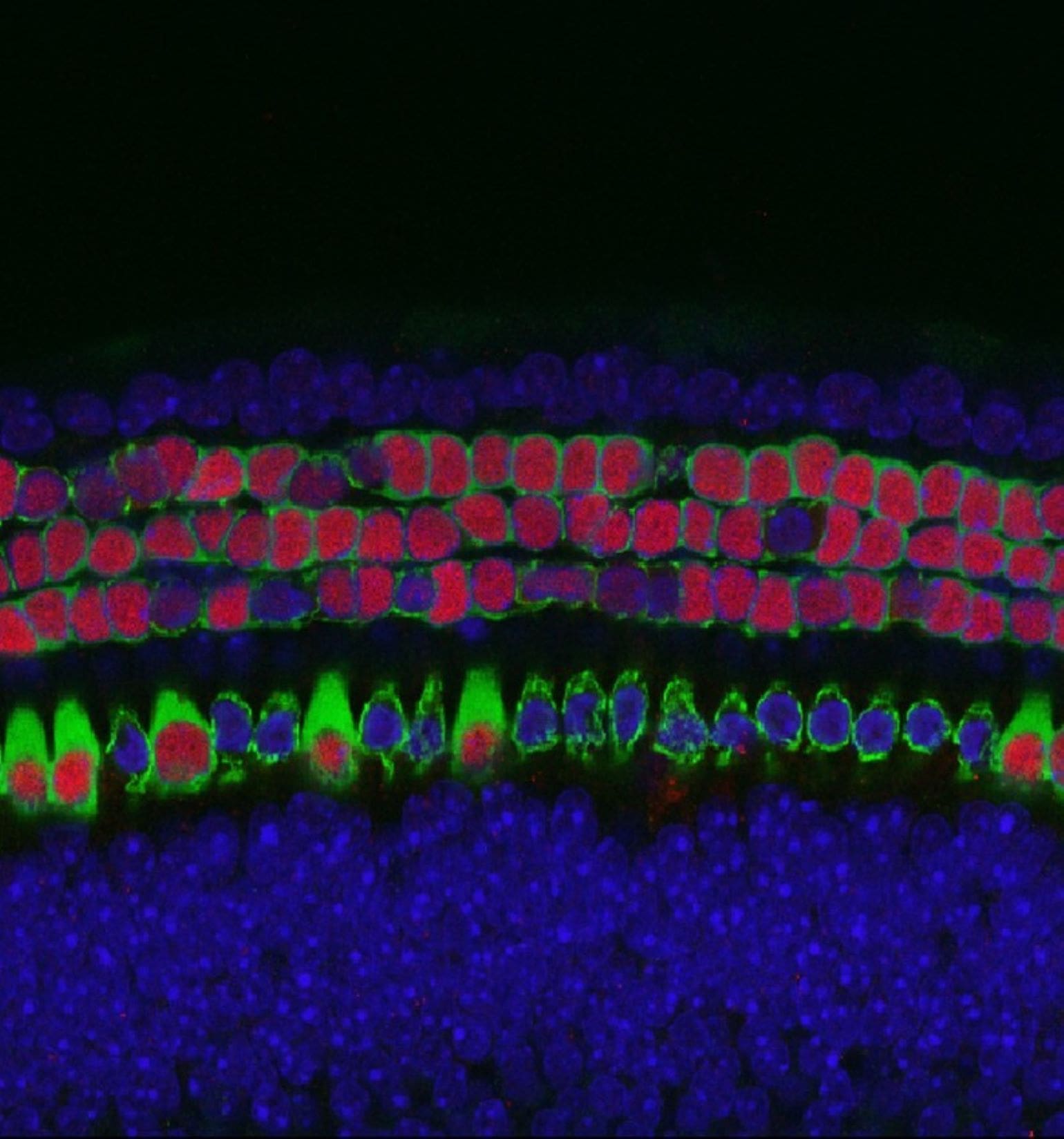Scientists Identify Role of Protein Behind Rare Norrie Disease; Find Clues For Treating Hearing Loss
Key findings
- Norrie disease is a rare hereditary disorder that causes deafness, blindness and intellectual disability caused by a mutation in the gene for Norrie disease protein (NDP)
- Albert Edge, PhD, and Yushi Hayashi, MD, PhD, of Mass Eye and Ear, discovered that the rare disorder also holds a major clue for treating irreversible hearing loss
- By analyzing the downstream expression of the NDP gene in mice, researchers found that the NDP gene plays a vital role in the maintenance and survival of hair cells in the cochlea, which are responsible for detecting sound
- Findings revealed two possible avenues for preventing deafness in mice with a mutated NDP gene: forced activation of NDP or increasing the level of ß-catenin
Norrie disease is a rare, inherited disorder caused by more than 100 different mutations in the Norrie Disease Protein (NDP) gene that can lead to blindness, deafness and intellectual disability in males. While infants with Norrie disease are born blind, their hearing is typically normal at birth and progressively deteriorates to profound hearing loss by an average age of 12 years. The hearing loss can be particularly devastating for families with an affected child.
Subscribe to the latest updates from Otolaryngology Advances in Motion
Albert Edge, PhD, worked with research fellow Yushi Hayashi, MD, PhD, to identify the mechanism that can lead to deafness in the rare disease. The researchers found that NDP, which is lacking in patients with the rare disease, is essential for the maintenance and survival of hair cells in the cochlea, which are the cells responsible for hearing. The researchers also found that a pathway believed to be vital for hair cell regeneration, known as the Wnt pathway, could mimic the effects of NDP by restoring hearing in deaf mice with Norrie disease.
Published in PNAS, the findings suggest a lack of NDP is what causes hair cells to deteriorate and ultimately leads to deafness, which may lead to promising treatment targets for the incurable disease and other forms of profound hearing loss.
Animal Research Uncovers New Clues About Little-known Condition
To better understand the role of the NDP gene, the researchers utilized knockout mice that lacked the gene. They found that these mice had abnormalities in their cochlear hair cells, which died between birth and 2 months of age, corresponding with the time course of progressive deafness.
The researchers then took a closer look at the pathology of the NDP knockout mice. By analyzing expression of genes downstream of NDP, the researchers found that NDP controls a network of transcriptional regulators required for maturation and maintenance of cochlear hair cells. They concluded that a lack of NDP affects hair cell development; the hair cells appear normal at birth but as they mature, some of them die and others have faulty expression of proteins. This could explain why children with the disease lose their hearing at later ages, sometimes as early as 7 years old.

Figure 1
Hair cells in a mouse model of Norrie disease. Image courtesy of Albert Edge, PhD, and Yushi Hayashi, MD, PhD.
After better understanding the pathology, they tested two rescue models to restore hearing loss in the knockout mice. First, they stimulated the Wnt signaling pathway which they had previously found to be important for hair cell regeneration. They did this by overexpressing a molecule called β-catenin in the newborn genetic knockout mouse, which replicated the effects of NDP on hair cells and resulted in normal hearing. This result pointed to the Wnt signaling pathway as one possible treatment modality.
The other method they used was overexpressing NDP in cells adjacent to the hair cells so that these supporting cells would secrete NDP into the area surrounding the hair cells. Once those cells secreted NDP, the protein bound to the hair cells. This subsequently restored normal function and rescued deafness in the mice.
Implications for Other Forms of Hearing Loss
Future studies will test potential treatments at different ages and disease stages of animal models. Gene therapy and other medications may be used as methodologies for stimulating hearing rescue.
Findings from this study can have implications for studying treatments for Norrie disease, which currently lacks a cure. Typically, Norrie disease is diagnosed when a child is born blind; thus, if a therapy for hearing loss in Norrie disease were available, it should be possible to initiate treatment before its onset.
The findings may also have implications for other forms of hearing loss resulting in cochlear hair cell death. Currently there is no way to rescue and reverse hair cell death in humans. Dr. Edge and colleagues have been looking at other ways to spur the Wnt signaling pathway to regenerate hair cells and these findings may contribute to that work.
view original journal article Subscription may be required
Learn more about the Department of Otolaryngology–Head and Neck Surgery at Mass Eye and Ear
Refer a patient to Mass Eye and Ear/Mass General Brigham